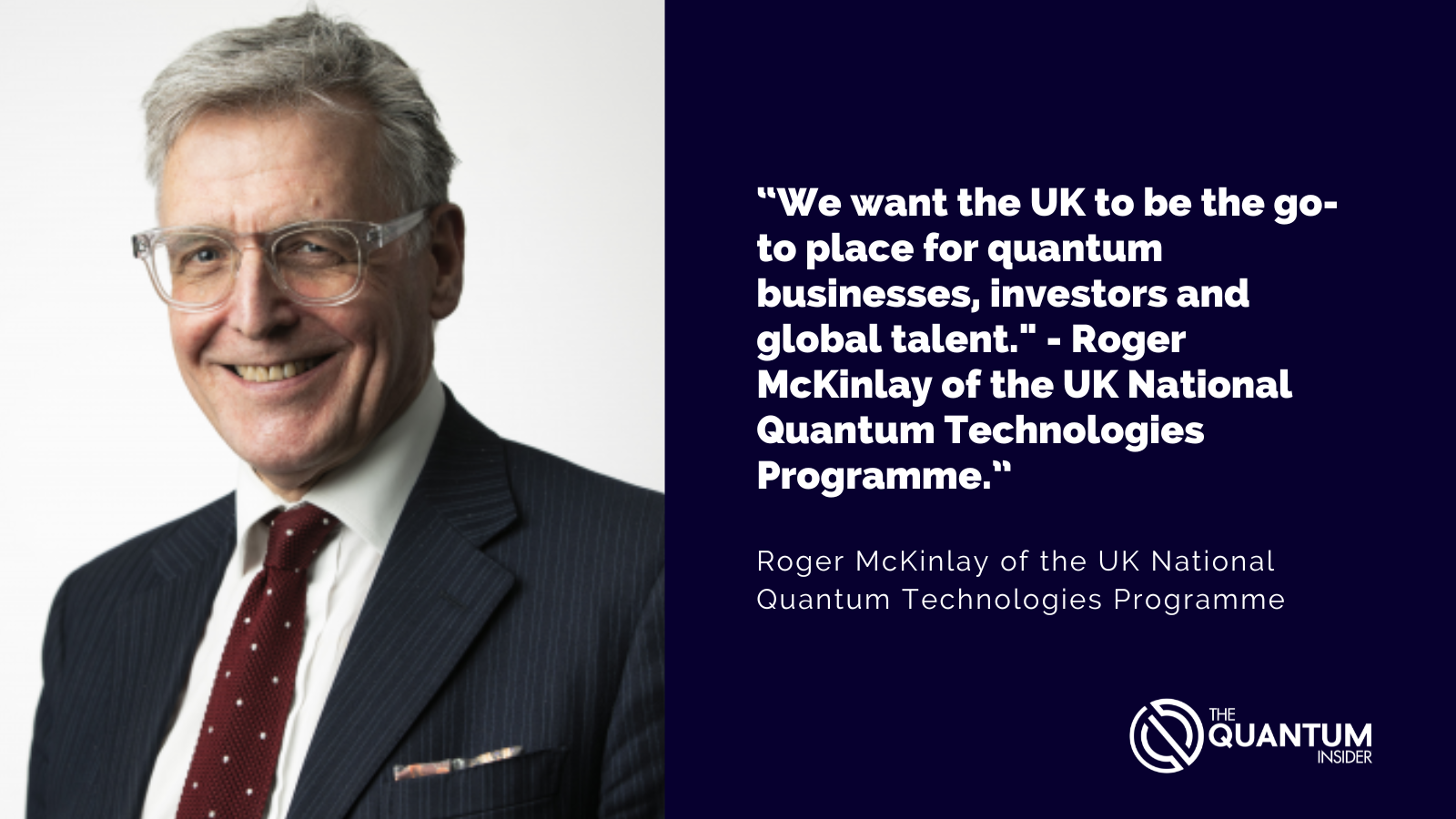The UK government has announced a £2.5 billion strategy to deliver a quantum-enabled economy by 2033. We caught up with Roger McKinlay of the UK National Quantum Technologies Programme.
What does the strategy mean for quantum in the UK?
This is more than a quantum strategy. This is a significant government strategy with quantum at its centre. The UK is on a journey to become the most innovative economy in the world and a science and technology superpower. Quantum is an essential part of the plan.
We want the UK to be the go-to place for quantum businesses, investors and global talent. It is a deep strategy spanning the supply chain and the adoption of quantum technologies to benefit businesses and society. It is also broad, covering computing, sensing/imaging and communications.
What does the UK strategy mean for other countries?
First and foremost, it means the UK is ready for collaboration. This strategy will ensure the UK has “tradable” expertise, components, products and services. This is not funding to enable the UK to pursue quantum research in splendid isolation. The creation of standards and a meaningful regulatory framework are part of the story and the UK will continue to take a leading role in these activities, working with other nations.

The £2.5B of funding announced has also moved the bar. Those leading other national programmes can now write “keep up with the UK” in their business cases. We have done everyone a favour!
What are some of the key points in the strategy?
The players – the Who – are key. The government has consulted extensively with many companies, universities and potential users of the quantum technologies – the whole ecosystem – to create the strategy.
Regarding the What, much of the strategy is about continuing with what works. A good example is the £100M being invested in new research hubs, an evolution of the highly successful and much copied hub model we have had in place since 2014. The same is true for the collaborative work with industry. However, there are also new activities, notably in skills.
The why is in the detail. The strategy firmly links investment to impact. Good examples are the two missions we recently launched – totalling £70M – one developing quantum technologies for position, navigation and timing (PNT), and another in quantum computing. These are clear national priorities with wide implications for the financial industries, manufacturing, construction, health, transport and defence, to name a few examples.
How would you sum up the UK government approach to its next 10-year commitment?
The mission approach being adopted by the government is important. This is about driving for impact and benefits in the face of scientific challenges, technical risks and wide areas of complexity and uncertainty. This will require joined-up government action. The UK National Programme has benefited from close co-operation, not only within UK Research and Innovation but also with the other programme partners such as the Ministry of Defence and GCHQ. The next phase will require closer cooperation still. The strategy announces the establishment of the Office for Quantum in the Department for Science, Innovation and Technology to implement this strategy, reporting regularly to the National Science and Technology Council, chaired by the Prime Minister. The National Quantum Computing Centre and the National Physical Laboratory will continue to play important roles.
Investment in the broad ecosystem will continue as will the development of skills, the nurturing of talent and the creation of an appropriate regulatory framework. The strategy specifically references the creation of a Quantum Skills Taskforce and STEM activity.
What else would you highlight from the strategy?
I should highlight growth. Terms such as “acceleration programme” and “catalyst” feature in the document. This growth will come from two areas: a new sector capable of developing, manufacturing, integrating and applying the technology and from existing businesses and organisations – including government – adopting the technology.
Being “quantum ready” remains an important goal. One aim is that by 2033, all businesses be aware of the potential of quantum technologies and three quarters of relevant businesses will be taking steps to adopt the technology.
The strategy builds on strong foundations. We already have strength in electronics, photonics, cryogenics and compound semiconductors. This existing strength is one of the reasons why the £174M used to fund quantum companies since 2018 has already attracted over £420M of private investment.
The UK is already home to the largest number of quantum start-ups in Europe. The ambition is to increase our share of the global quantum technologies market from the current level of about nine per cent, to 15 per cent by 2033.
Looking into your crystal ball, where do you see the UK programme in 10 years?
Taking a global view, I believe we will see businesses and other organisations benefiting from using quantum technologies in computing, sensing, imaging and communications. A blooming of “quantum advantage” one might say, globally.
This new programme and funding will help to ensure that the UK has a share in this future. Smart people and ambitious businesses will go wherever in the world they find support, encouragement and opportunity. The publication of this strategy and the commitment of £2.5B to a ten-year programme is both a recognition of this and a decision to act.
For more market insights, check out our latest quantum computing news here.















